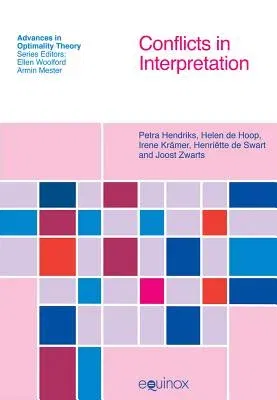Conflicts in Interpretation applies novel methods of constraint
interaction, derived from connectionist theories and implemented in
linguistics within the framework of Optimality Theory, to core semantic
and pragmatic issues such as polysemy, negation, (in)definiteness,
focus, anaphora, and rhetorical structure. It explores the hypothesis
that a natural language grammar is a set of potentially conflicting
constraints on forms and meanings. Moreover, it hypothesizes that
competent language users not only optimize from an input form to the
optimal output meaning for this form, or vice versa, but also consider
the opposite direction of optimization, thus taking into account the
speaker as a hearer and taking into account the hearer as a speaker. The
book aims to show that such a bidirectional constraint-based grammar
sheds new light on the relation between form and meaning, within a
sentence as well as across sentence boundaries, within a single language
as well as across languages, and within competent adult language users
as well as during language development. An important dimension of the
book is the structured investigation of issues at the interface of
semantics with syntax and pragmatics, such as the effects of
distinguishing between speaker's perspective and hearer's perspective in
comprehension and production, stable and instable patterns of form and
meaning across languages, and the development of a coherent pattern of
form and meaning in children.
Conflicts in Interpretation will be of interest to any researcher or
advanced student in linguistics, cognitive science, language typology,
or psycholinguistics who is interested in the capacity of our human mind
to map meaning onto form, and form onto meaning.

